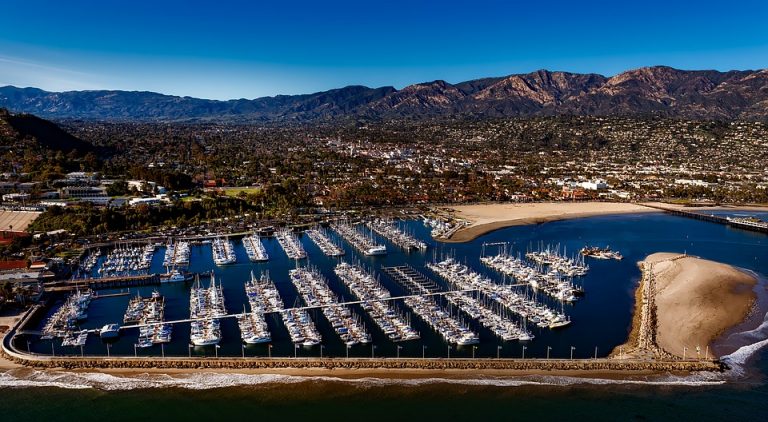Landscapes are more than just your exciting scenic views; they are the backbone of global ecosystems, especially with today’s eco-consciousness.
These often ethereal-looking diverse natural environments, ranging from forests and mountains to grasslands and wetlands, play a crucial role in sustaining life all over the world, or should it be “all over the earth?”
So, explore these insights, like looking through nature’s binoculars, to see why these vibrant, healthy landscapes are indispensable to the planet and how they support global communities and industries worldwide.
Essential Resources for Communities and Industries
Landscapes, from man’s early beginnings, have always provided the essential resources fundamental to people’s livelihoods and large-scale industries today. It’s quite evident in how forests and rivers supply clean water, food, and raw materials that communities worldwide depend on and thrive with.
Take, for example, agriculture, a critical industry for feeding the global population that relies heavily on healthy landscapes to maintain productive soil, pollinator species, and water, among other resources.
These industries involve machinery and transportation, especially farm equipment transport and shipping, which depend largely on sustainably managed landscapes for safe and effective operations as they pass through.
It’s these healthy ecosystems that help stabilize soils, reduce erosion, and maintain natural barriers, which indirectly support machinery and equipment transport and supply chain functions.
Climate Control and Air Quality Regulation
One of the most critical roles Mother Nature’s landscapes play in global ecosystems is climate regulation or its control. Just like the beautiful forests, grasslands, and oceans that act as nature’s huge carbon sinks, absorbing carbon dioxide (CO₂) from the atmosphere so as not to cause more harm to humans.
As these natural protectors capture and store carbon, they effectively help slow down global warming and combat the worrisome climate changes. They remain as vital natural helpers to maintain climate stability and, at the same time, influence everything from agricultural productivity to weather challenges.
So the next time you say “Wow!” at healthy landscapes and magnificent trees, think of how they filter pollutants from the refreshing air you breathe. It’s the wonders trees and plants are doing every time. For instance, as they absorb carbon dioxide and release oxygen, they promote cleaner and fresher air, improving your and people’s overall health.
In many urban areas today, greenscapes like parks and vertical gardens are being encouraged and nurtured to help reduce air pollution, making cities more livable, effectively eco-friendly, and beautifully sustainable.
Biodiversity Support and Habitat Preservation
These landscapes, especially nature-maintained ones, are home to countless extraordinary living species like plants, animals, and microorganisms that form quite diverse ecosystems, essential for biodiversity and keeping the whole earth healthy. This biodiversity underpins ecosystems, providing stability and resilience for all earth-dwellers, not just people’s population.
Different habitats – like wide forests worldwide, wetlands, and deserts – each support quite unique species that contribute to ecological balance, serving vital functions such as pollination, pest control, and nutrient cycling, which equally help support each other.
Your endeavors and efforts with other advocates to help these habitats are quite crucial. Just think of the posed risks that could happen if these landscapes are wiped out. People could lose their needed species that are not only part of the planet’s natural heritage but are also indispensable to the ecosystem services they rely on or depend on for sustenance every day.
Just like what happens if the earth loses pollinators, this could disrupt food production, directly impacting food supplies and prices across communities and countries around the world.
Water Cycle and Soil Health Maintenance
In the beginning, Mother Nature has already given awesome landscapes as gifted players in maintaining or regulating the earth’s waters.
Your proof could be in how forests and wetlands act as natural water thrift banks, absorbing rainfall and releasing it slowly over time, preventing floods, and providing an unceasing flow of water, even in dry seasons.
Also, healthy soil, like those maintained through more balanced ecosystems, effectively acts like a sponge, storing water and nutrients most needed by agriculture and vegetation’s health and growth.
This web or interconnectedness of water systems and landscapes can be seen in groundwater levels and river flows, which communities, agriculture, and their related industries depend on. Even a slight disturbance to these water flows can already affect or have far-reaching effects on people’s food security, water availability, and some industries’ operations across jurisdictions.
Conclusion
The vitality of landscapes around the globe can be quite indispensable so every life form today may be sustained. They’re quite needed to balance and support biodiversity and water cycles, maintain livable climate and air quality, and provide life and industry-sustaining resources.
They may be awe-inspiring, but more than that, these natural beauties can provide crucial services that benefit local communities and global economies, especially the food distribution chain.
That’s why working to protect and fight for the preservation of our natural resources is essential – not only for the ecosystems they house. They’re quite vital for industries, cultures, and individuals who rely on them every day, so they continue to thrive.







